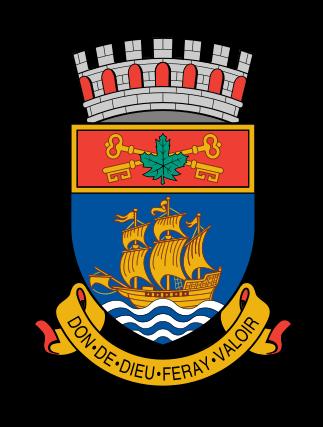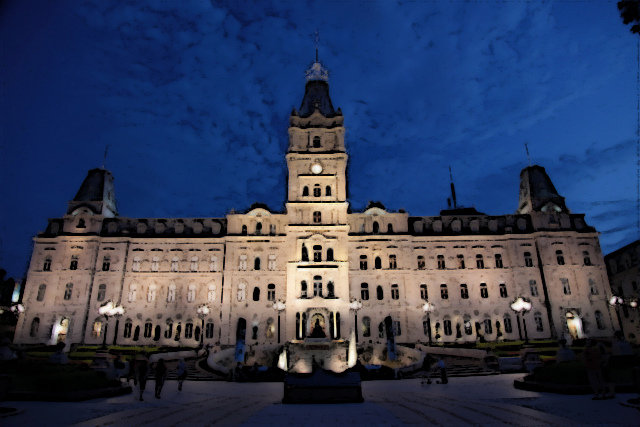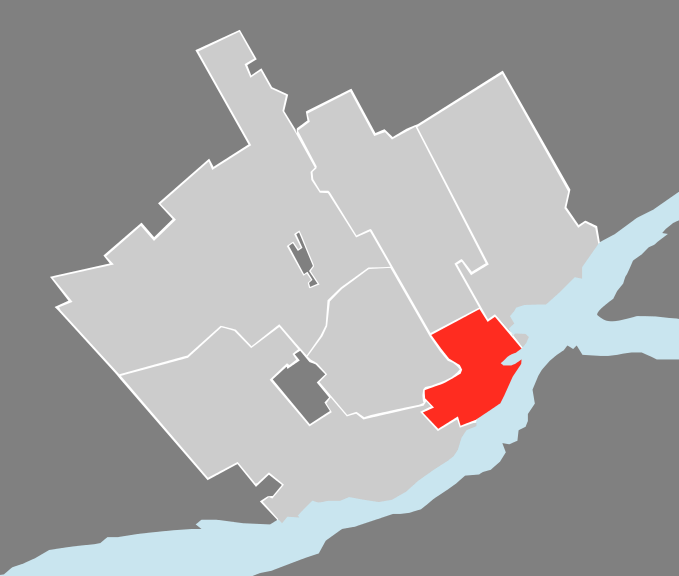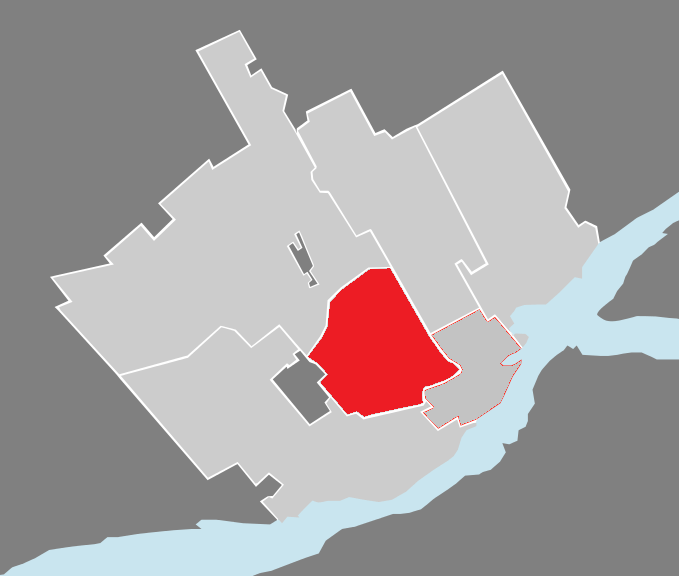Quebec City
- La République du Québec -x- Montreal -x- Toronto -x- League of the Night -x- League of the Night Lexicon
Apparence
Blason
Climat
The climate of Quebec City is classified as humid continental and experiences four distinct seasons.
Summers are warm and occasionally hot, with periods of hotter temperatures which compounded with the high humidity, create a high heat index that belie the average high of 22–25 °C (72–77 °F) and lows of 11–13 °C (52–55 °F).
Winters are often cold, windy and snowy with average high temperatures -5 to -8 °C (23 to 18 °F) and lows -13 to -18 °C (9 to -0 °F). Spring and Fall, although short, brings chilly to warm temperatures. Late heat waves as well as "Indian summers" are a common occurrence.
On average, Quebec City receives 1,230 millimetres (48.43 in) of precipitation, of which 924 millimetres (36.38 in) is rain and 307 millimetres (12.09 in) is the melt from 316 centimetres (124.4 in) of snowfall per annum.
The city experiences around 1,905 hours of sunshine annually or 41% of possible sunshine, with summer being the sunniest, but also slightly the wettest season. During winter, snow stays on ground from about December to April.
Économie
Gouvernement
- -- Bâtiment du Parlement de Québec -- The National Parliament Building.
- -- National Assembly of Quebec -- Previously the provincial legislature, now the national legislature of Free Quebec. (Vieux-Québec)
Géologie
Histoire
Emplacement
Population
- -- City (516,622) - 2011 census
- -- Urban (696,946) - 2011 census
- -- Metro Area (765,706) - 2011 census
Arenas
Attractions
- -- Anglican Palais de Justice (Quebec City)
- -- Bastion des Agustines (Quebec City)
- -- Centre d'interpretation du Vieux-Port (Quebec City)
- -- Chalmers-Wesley (Quebec City)
- -- Clarendon (Quebec City)
- -- Domaine de Maizerets (Quebec City)
- -- Douanes (Quebec City)
- -- Fahre (Quebec City)
- -- Ferry (Quebec City)
- -- Frontenac (Quebec City)
- -- Funicular (Quebec City)
- -- Hotel de Ville (Quebec City)
- -- Jesuites (Quebec City)
- -- Maison Loius-Jolliet (Quebec City)
- -- Maison Montcalm (Quebec City)
- -- Monastere de l'Hotel-Dieu (Quebec City)
- -- Monastere des Ursulines (Quebec City)
- -- Notre Dame du Sacre-Coeur (Quebec City)
- -- Old Fire Station (Quebec City)
- -- Old Post Office (Quebec City)
- -- Parc La Cetiere (Quebec City)
- -- Parc Montmorency (Quebec City)
- -- Place de Paris (Quebec City)
- -- Porte Prescott (Quebec City)
- -- Porte St-Louis (Quebec City)
- -- Poudriere de l'Esplanade (Quebec City)
- -- Societe du Port du Quebec (Quebec City)
- -- St-Andrews (Quebec City)
- -- Stairway (Quebec City)
- -- Ste-Price (Quebec City)
- -- Ste-Trinite (Quebec City)
- -- Airport (Quebec City)
- -- Artillery (Quebec City)
- -- Barracks (Quebec City)
- -- Beauport (Quebec City)
- -- Centre d'Achat (Quebec City)
- -- Centre Municipal des Congres (Quebec City)
- -- Hotel du Parlement (Quebec City)
- -- Ille d'Orleans (Quebec City)*
- -- Institut Canadien (Quebec City)
- -- Nouvel Palais de Justice (Quebec City)
- -- Old Foundry (Quebec City)
- -- Palais Montcalm (Quebec City)
- -- Parc de la Jeunesse (Quebec City)
- -- Patronage St-Vincent de Paul (Quebec City)
- -- Soeurs de la Charite (Quebec City)
- -- Soeurs Grises (Quebec City)
- -- St-Jean Baptiste (Quebec City)
- -- St-Mathieu (Quebec City)
- -- Bon-Pasteur (Quebec City)
- -- Cite Universitaire (Quebec City)
- -- La Laurentienne (Quebec City)
- -- Manege Militaire (Quebec City)
- -- Marie-Guyart (Quebec City)
- -- Parc de l'Amerique-Francaise (Quebec City)
- -- Parc des Champs de Bataille (Quebec City)
- -- Séminaire du Québec (The Jesuit Seminary of Quebec City)
- -- St Coeur de Marie (Quebec City)
- -- St-Foy (Quebec City)
- -- Synagogue (Quebec City)
- -- Musée de la Civilisation (Museum of Civilization of Quebec City)
- -- Porte Dalhousie (Quebec City)
- -- Porte Durnford (Quebec City)
- -- Vieux Port (The Old Port of Quebec City)
- -- Yacht-Club de Québec (Quebec City)
Bars et Clubs
Dance Clubs
- -- Le Boudoir Lounge ()
- -- Le Drague ()
- -- Liquor Store ()
- -- Maurice Nightclub ()
- -- Dagobert Nightclub ()
Pubs
- -- Pub Saint-Alexandre ()
- -- D'Orsay Restaurant Pub European ()
- -- Le Turf Pub ()
- -- Pub Galway ()
- -- Pub Edward ()
- -- St-Laurent Bar & Lounge ()
- -- Saint Patrick Irish Pub ()
- -- Pub Irlandais Le Saint-Patrick ()
- -- Bourbon Cafe
- -- La Ninkasi du Faubourg
- -- Le Sacrilege (The Sacrilege)
- -- L'oiseau Noir (The Black Bird)
- -- Belley Tavern ()
- -- Le Chantauteuil ()
- -- [[]] ()
- -- [[]] ()
- -- [[]] ()
- -- [[]] ()
Cimetières
- -- Côte de la Montagne Cemetery -- Old Québec
- -- Notre-Dame-de-Québec Basilica-Cathedral - active crypt
- -- Hôpital-Général de Québec Cemetery -- Former military cemetery
- -- Indian Cemetery -- Native American cemetery
- -- Beth Israel Cemetery -- Jewish graveyard
- -- St. Matthew’s Cemetery
- -- Saint-Pierre-de-l'Île-d'Orléans - cemetery near Quebec City
- -- Grosse-Île National Historic Site -- former quarantine station and Irish graveyard
- -- Mount Hermon Cemetery
- -- Saint-Charles Cemetery
- -- St.Patrick's Cemetery
- -- Dr. Pierre Leclerc -- ghoul mortician
http://www.quebecregion.com/en/quebec-city-and-area/cemeteries-of-quebec-city
Commerces (shops)
Couvents et Monastères
- -- Ursuline Convent of Quebec City -- Established 1639.
Crime
Many of these gangs and organized crime groups are either enemies or allies with each other, and some also have international connections.
- -- Caribbean street gangs
- -- Eastern European organized crime groups
- -- Italian crime families
- -- Outlaw biker gangs
- -- Asian organized crime groups
- -- South Asian street gangs
- -- Hispanic street gangs
http://en.wikipedia.org/wiki/Gangs_in_Canada#Quebec
Les Citoyens de la Ville de Québec
Civil Servants
- -- Rodolphe Voclain -- Former Mayor of Quebec City (deceased -- October 3rd, 2022)
- -- Quebec City Council -- There are 35 city council members.
- -- Inspector Apollinaire Lefurgey - Quebec police inspector
- -- Dr. Marcellin Fabre -- night shift coroner
- -- Joachim Leclair -- coroner's assistant
Les événements actuels (current events)
Festivals
Fortifications
- -- Dauphine Redoubt (Quebec City) -- Artillery Park
- -- Ramparts of Quebec City -- Vieux-Québec / Old Québec -- Originally built in 1694.
Galeries
Hôpitaux
- -- Hôpital Laval
- -- Hôtel-Dieu de Québec -- (established 1637)
- -- Institut universitaire en santé mentale de Québec
Hôtels
- -- Fairmont Le Château Frontenac -- The Tremere Chantry
- -- Le Hotel de Glace -- A winter only attraction.
- -- Hôtel Pur -- A hotel in the heart of downtown Quebec City, a few blocks north of le Universite du Quebec. It caters to business travellers.
Les Supermarchés
Points de Repère
Cartes de la Ville
Médiatique (mass media)
- -- Le Journal de Québec (Francophone Daily Newspaper)
- -- Le Soleil de Quebec (The Quebec Sun -- A Francophone Daily Newspaper)
- -- Quebec Scope Magazine (arts & culture monthly)
- -- Quebec Chronicle Telegraph (Anglophone Weekly Newspaper)
Monuments Locaux
- -- Citadelle of Quebec -- The Duke's domain.
Musées
- -- Musée de la Civilisation (Museum of Civilization) (Vieux-Québec)
- -- Musée national des beaux-arts du Québec (National Museum of Fine Arts of Quebec) (Vieux-Québec)
Quartiers - Arrondissements
Boroughs and Districts
On 1 January 2002, the 12 former towns of Sainte-Foy, Beauport, Charlesbourg, Sillery, Loretteville, Val-Bélair, Cap-Rouge, Saint-Émile, Vanier, L'Ancienne-Lorette, Saint-Augustin-de-Desmaures and Lac-Saint-Charles were annexed by Quebec City. This was one of several municipal mergers which took place across Quebec on that date. Following a demerger referendum, L'Ancienne-Lorette and Saint-Augustin-de-Desmaures were reconstituted as separate municipalities on 1 January 2006, but the other former municipalities remain part of Quebec City. On 1 November 2009, the Quebec City re-organized its boroughs, reducing the number from 8 to 6.
As of 2011 Quebec City has 35 districts in six boroughs. All districts are numbered, and most are named. In most cases the name of the district is similar to a historical town or village it replaced, but not always. Districts each elect their own council, which are part of public consultations with the city government. The numbering system was based on the 2002-2009 borough boundaries, so post-2009 the numbers do not correspond completely with the boroughs.
http://local.fiatlux.tk/quebec/quartiers
La Cité-Limoilou - Quebec City
Introduction
La Cité-Limoilou is the central borough of Quebec City, the oldest (in terms of architecture), and the most populous, comprising 21.85% of the city's total population. As an administrative division, it is very new, having only been formed on November 1, 2009, from the former boroughs of La Cité and Limoilou; now La Cité-Limoilou.

Districts of La Cité
La Cité ("the city" or "the stronghold") is the historic heart of Quebec City. It was the entirety of the city until the nineteenth century expansions and amalgamations. The former borough was divided into six different districts before the 2009 reorganization. The central district of La Cité is Vieux-Québec—Cap-Blanc—colline Parlementaire. It is in turn centred on the old walled city, Old Quebec, and also includes nearby Parliament Hill, the Old Port, and the Petit Champlain shopping district. Other districts within La Cité are also home to much historic architecture and many important institutions.
- -- <<Vieux-Québec–Cap-Blanc–colline Parlementaire>>
- -- <<Saint-Roch - Quebec City>>
- -- <<Saint-Jean-Baptiste - Quebec City>>
- -- <<Montcalm - Quebec City>>
- -- <<Saint-Sauveur - Quebec City>>
- -- <<Saint-Sacrement - Quebec City>>
- -- Quartier Petit-Champlain
Districts of Limoilou
Limoilou is a former borough of Quebec City. Population (2001): 44,980. It consisted of the neighbourhoods of Vieux-Limoilou, Lairet and Maizerets. It is bordered by the borough of Beauport in the northeast, by the borough of Charlesbourg in the northwest, by the borough of Les Rivières in the southwest, and in bordered in the south of the former downtown borough of La Cité (now also part of La Cité-Limoilou). In terms of architecture, Limoilou is second only to La Cité as Quebec City's oldest neighbourhood. It is also Quebec City's second most densely populated borough, with 4,656 inhabitants/km². A defining characteristic of the neighbourhood is its grid pattern layout, and the numerical naming of its streets, such as 11th Street and 3rd Avenue.
History: The first recorded instance of the name "Limoilou" to designate this former municipality occurred in 1893. It is a variant of the word Limoëlou, the name of 16th century French explorer Jacques Cartier's manor in Saint-Malo, Brittany, France.
Up until the end of the 19th century, the territory of Limoilou was entirely rural. First the settlements of Stadacona and Hedleyville appeared along the shore of the Saint-Charles River. Originally a separate municipality, it was incorporated into Quebec City in 1909 with which came larger, more urban projects.
- -- <<Vieux-Limoilou>>
- -- <<Lairet>>
- -- <<Maizerets>>
Les Rivières
Introduction
Les Rivières (The Rivers) is a borough of Quebec City. It comprises 5 neighbourhoods: Neufchâtel-Est, Lebourgneuf, Duberger, Les Saules and Vanier. Except for Vanier, all of theses neighbourhoods were part of the pre-2002 city of Quebec.
Description
Les Rivières is one of the six boroughs of Quebec City. It takes its name from the Saint-Charles River that passes through the borough as well as two tributaries rivers of Saint-Charles: Berger and Lorette. The borough is geographically located in the center of Quebec City.
Les Rivières borough vastly corresponds to the Rivières section of the former city of Québec (Québec City as it was know before the 2002 municipal reorganization). The borough also include the former city of Vanier which was merged into Quebec City in 2002.
The Rivières section of the former city was made of four municipalities that were annexed to Quebec City in the 1970s. They were Duberger, Les Saules, Neufchâtel and Charlesbourg-Ouest. These former municipalities kept their respective name as neighborhoods of Quebec City with the exception of Charlesbourg-Ouest which was renamed Lebourgneuf. Lebourgneuf got its name as a portmanteau from the last letters of Charlesbourg and the first letters Neufchatel because Charlesbourg-Ouest was located between Charlesbourg and Neufchâtel.
Following the creation of the new city of Quebec in 2002, Neufchâtel was dismantled, with most of it going to La Haute-Saint-Charles borough. The part of Neufchâtel that was retained by Les Rivières borough became Neufchâtel-Est.
Sainte-Foy–Sillery–Cap-Rouge
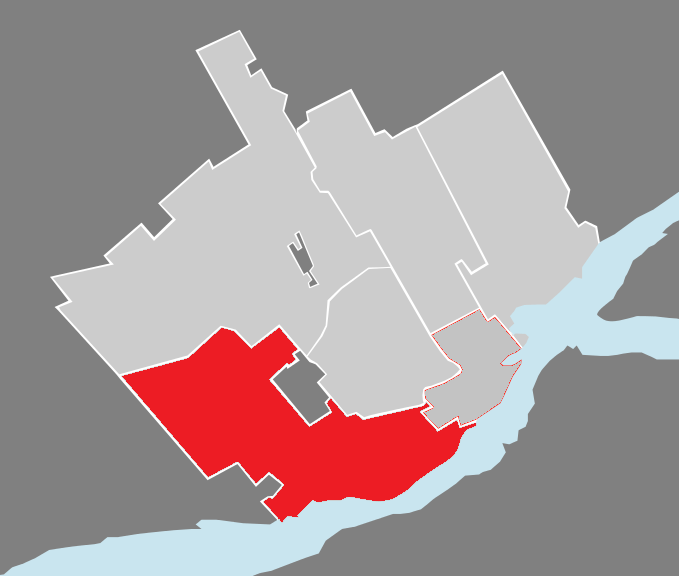
Sainte-Foy–Sillery–Cap-Rouge is a borough of Quebec City.
The borough was created on November 1, 2009, from the former borough of Sainte-Foy–Sillery and part of the former borough of Laurentien. Those boroughs in turn had been created on January 1, 2002; on that date, the former city of Cap-Rouge, a small part of the former city of Sainte-Foy, and other territory went into Laurentien, while the former city of Sillery and the rest of Sainte-Foy formed Sainte-Foy–Sillery.
Charlesbourg
Introduction
Founded in 1659, Charlesbourg is a borough of Quebec City, in the northeastern part of the city and West of the borough of Beauport. Incorporated in 1976 following the merger of the cities of Orsainville, Notre-Dame-des-Laurentides, the town of Charlesbourg (1949) and the municipality of Charlesbourg-Est (1928). It became part of Quebec City on January 1, 2002 after a controversial province-wide city merger project.
This residential suburb of Quebec City is the fourth-largest urban centre of the Québec Urban Community. Like Beauport, it has increased by more than 20,000 people over the last 25 years.
History
The first settlement of Charlesbourg dates back to the 1660s when the Jesuits organized the nucleus of a colony in a place known as the Trait Carré, meaning "perpendicular." The name Charlesbourg originates from this time from a chapel built at Bourg-Royal, in honour of St Charles Borromée. The village site at the Trait-Carré had a rather characteristic triangular parcelling-out of the land radiating outwards from a central square, in the centre of which the church was located. The land allotted to every tenant would fan out from that point in an isosceles triangular shape away from the town square. In this way, the farmhouses would all be situated close to the town centre, making it easy for everyone to help out and to participate in community-oriented tasks and festivities while being in a position to defend the village against attacks.
This geographical and architectural trademark of Old Charlesbourg, recognized as a provincial historic site (1965), is well worth a visit by enthusiasts of cultural geography and architectural heritage. There are only two examples of this kind of settlement layout in all of Canada: Charlesbourg and Bourg-Royal. Charlesbourg is rich in architectural landmarks: the church, built between 1827-33; the Jesuits grist mill and 15 other houses dating back to the pre-1830 period; and about 40 other buildings typical of the second half of the 19th century.
Beauport
Introduction
Beauport is a borough of Quebec City, Quebec, Canada on the Saint Lawrence River.
Beauport is a northeastern suburb of Quebec City. Manufacturers include paint, construction materials, printers, and hospital supplies. Food transportation is important to the economy. Attractions include Parc de la Chute-Montmorency (Montmorency Falls Park), which contains a fortification built in 1759 by James Wolfe and Manoir Montmorency, the home from 1791 to 1794 of Prince Edward, Duke of Kent and Strathearn.
The city's historic district contains many interesting churches and homes, including Bélanger-Girardin House, a National Historic Site of Canada where visitors can learn about Beauport's heritage. Annual events include the spring arts festival Salon de Mai and the summer Festival Folklorique des enfants du monde, a multicultural and international children's folklore festival.
History
Beauport was established in 1634, making it one of the oldest European-founded communities in Canada.
An Internment camp was set up at The Armoury in Beauport, Quebec from December 1914 to June 1916.
It was incorporated as a city in 1976 through the amalgamation of seven municipalities (Beauport, Saint-Michel-Archange, Giffard, Villeneuve, Montmorency, Courville and Sainte-Thérèse-de-Lisieux). During the 1990s its population continued to grow because of its economic diversification, available space, and outdoor recreational opportunities. On January 1, 2002, Beauport was merged into Quebec City.
Districts
http://en.wikipedia.org/wiki/Beauport,_Quebec_City
La Haute-Saint-Charles
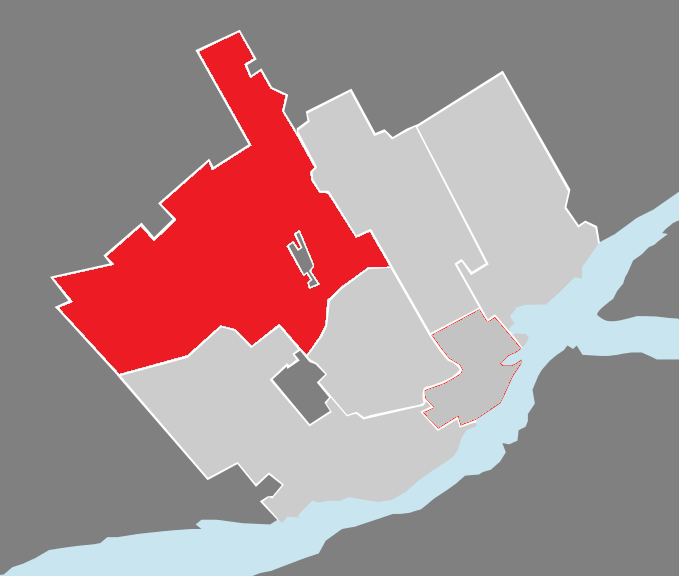
La Haute-Saint-Charles is a borough of Quebec City. Population (2006): 74,070. It comprises Lac-Saint-Charles, Saint-Émile, Neufchâtel, Loretteville and Val-Bélair.
Parcs de la Ville
- -- Aquarium du Québec
- -- Beauport Bay
- -- Cartier-Brébeuf National Historic Site
- -- La Promenade Samuel-De Champlain
- -- Parc of the Kabir Kouba Cliff and Waterfall
- -- Parliament Hill (Quebec City)
- -- Plains of Abraham
- -- The Battlefields Park
- -- Victoria Park
Résidences Privées (private residences of note)
Restaurants
Ruines
Écoles
- -- Laval University of Quebec City
- -- Universite du Quebec -- (Jamie's New Domain)
Sociétés (majeur) et les Entreprises (mineur) (corporations)
- -- NuTech Research Campus -- South side of the St. Lawrence River.
- -- Saint Lawrence Automotive Corporation (Electric Car Factory)
- -- The Quebec Historical Society -- Owns and maintains several historical sites in and around Quebec City.
Théâtres
- -- Theatre Capitole --
Transport
- -- Gare du Palais (Palace Station) -- The main train station in Q-City.
Une Terre Sainte (holy ground)
- -- Notre-Dame-des-Victoires -- Construction began in 1687 and was completed in 1723.
- -- Séminaire de Québec -- (established 1663)
- -- Église Saint-Roch - the "Second Most Impressive Church in the Quebec Region"
Les Messes Mortels (the mortal masses)
- -- <<Ariella Ansel>> -- Lieutenant of the Ministry for the Interior (FAS Diplomat)
- -- <<Sylvianne Bellerose>> -- Pentex Subversive
- -- <<Giampiero Idoni>> -- Head of the Idoni crime family of Quebec City.
- -- <<Colombano Idoni>> -- Loyal son and head of legitimate operations.
- -- <<Nicéphore Herriot>> -- Quebecois thief.
- -- <<Émile Sault>> -- Quebecois security guard (Germano Giovanni).
Les gens féeriques et les alleux du Québec (The Fairy People and the Freeholds of Quebec)
Les Loups-Garous et leurs Terres Sacrées (The Werewolves and their Sacred Lands)
Le Umbra et sa Couvée (The Umbra and its Brood)
- -- Big Ben -- The temporal spirit in the old train station.
La Pègre et ses Morts sans Repos (The Underworld and the Restless Dead)
- -- Charline 'Charley' Eccleston -- A centuries dead mother in search of a centuries lost child.
- -- Mélissa Lachance -- A young woman tortured for three days and then murdered and eaten by her beloved boyfriend.
- -- Dominique -- Wraith who does some business with Calogero Giovanni.
- -- Sister Dominique -- Wraith who does some business with Calogero Giovanni.
- -- Joseph P. Kennedy, Sr. -- Financial adviser to Germano Giovanni.
- -- Cosme Travers -- local Sandman playwright.
Les Vampires de la Ville de Québec
For a city so recently reclaimed by the undead, Quebec City is naturally beset by numerous factions within the larger World of Darkness. That it spent a mere decade under the watchful eye of the Camarilla before coming under assault by the rabid forces of the Sabbat tells its own tale. But now the city of Quebec lies in the hands of the youngest sect, the League of the Night. With only a bare handful of defenders, can the league hold the territory it has gained in battle or will the conflict even be fought on a battlefield at all? Unlike the Camarilla which hand-picked the vampiric residents of Quebec City, the league is a militant interloper which forcibly injected itself into the latest round of the Camarilla-Sabbat war. With the clock ticking and Sabbat forces closing on the city, the league offered Quebec City's Kindred residents a devil's bargain, accept league hegemony or be overrun by the feral forces of the Sabbat.
That the Camarilla of Quebec City chose to accept league dominion over the final death is no surprise. But, now that the Sword of Caine has been beaten back, how many of the city's undead will keep their oaths of alliance to the league, for after all, is an oath that is given under duress truly fair or binding? The league's defenders aren't the only ones who are holding an unnecessary breath in anticipation of an answer to that question, for clearly many of the former members of the Camarilla are asking themselves that same question. For some the answer is easy, but not for all, because its not so simple a thing to forget a life-debt, especially when that life is eternal. Of course, while the league watches the former Camarilla members for traitorous behavior, they must also guard the borders against the Sabbat which will not soon forget the league's interference in their holy crusade. And while League of the Night, Sabbat and the Camarilla squabble over Quebec City like starving jackals, the other denizens of the night look upon the city with hungry eyes and await their opportunity to gain a foothold or outright supremacy.
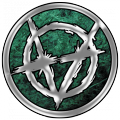 Brujah
Brujah
- -- Andrea Visconti -- The new Duchess of Quebec City, formerly of Los Angeles.
- -- Lydie Séverin - Countess of the Criminal Underworld and Street.
- -- Zhi Chen Jiang (志辰江) -- Lady in service to the Countess of the Underworld.
- -- Chou Shizuka (蝶静香) -- Lady in service to the Countess of the Underworld.
- -- Cohen Pierce -- Brujah Knight.
 Caitiff
Caitiff
The arrival of the Caitiff in the form of Azazel Jones and his disciple Velvet Fang is a milestone. In local Camarilla cities, Caitiff like Jones and Fang were an untouchable caste that often received verbal and sometime physical abuse. That is if they were lucky, for many Caitiff serve as scapegoats for local Camarilla problems or are exterminated like an odious kind of vermin. The league has a much more lenient and empathetic point of view on the Caitiff, granting them equal status based on the merit of their capacity. While this approach is far from ideal, the teeming masses of clanless vampires are willing to accept any kind of port in the storm. This means that it is extremely likely that Quebec City will become a mecca for the Caitiff. Lest this seem like an oversight on the part of the league leadership, consider that the League of the Night will need a veritable army if it is to expand in the DMZ between the warlike Sabbat and the calculating Camarilla.
- -- Azazel Jones -- Caitiff cult leader.
- -- Velvet-Fang -- Azazel's indoctrinated childe and sex-slave.
- -- Titania Deville -- Caitiff Spy-Mistress for Xavier, called the "Crimson-Knight"
 Gangrel
Gangrel
At the moment, there is only a single Gangrel in Quebec City, Ujarak, an young Inuit tribesman who was forcibly Embraced and then abandoned by his sire. His mortal tribe was horrified by what he had become, but in their way they dealt with the problem by banishing their formerly loved one so that he might find some kind of peace among his own kind. Given Quebec City's close proximity to vast wilderness of the Quebecois forest lands, it seems likely that Ujarak will not be the last Gangrel to pass through the city. Moreover, the wilds are home to werewolves and with so much unspoiled wilderness, their numbers are likely to be great. With the recent outbreak of vampiric hostilities, the Garou have doubtless noticed the growing numbers of undead in Quebec City, so perhaps have a few Gangrel present in the city could prove useful in any upcoming hostilities with the local werewolves.
- -- Ujarak -- Inuit tribesman.
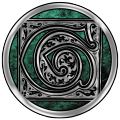 Giovanni
Giovanni
The city of Quebec has only one token Giovanni at the moment, but given the necromancer's support in the struggle against the Sabbat, that could change. Germano Giovanni is a prickly subject these nights, as a Giovanni he stands outside the League, even though his heroism during the Sabbat siege of 2032 earned him an offer of league membership, which he then promptly refused. As it is common knowledge that the city would likely have fallen to the Sabbat without Giovanni aid, the league finds itself beholden to the necromancers and thus tolerant of Germano's unusual status in Quebec City. Despite this, they have made clear to Germano that other Giovanni won't be welcomed into the city, his unique status is his alone, which makes him the go-to-man for league vampires needing Giovanni services or for Giovanni who want to accomplish something in Quebec City.
- -- Germano Giovanni -- A former clan enforcer raised to local Don. {Considered an ally of the League in Quebec}
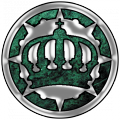 Lasombra
Lasombra
When it comes to the Lasombra antitribu, the League of the Night has an open door policy, provided the magister in question can prove his or her loyalty. At this point, it is well known just how much the magisters hate their counterparts in the Sabbat and that they make excellent allies in the war against the Sabbat. Quebec City's lone magister has been a resident since the city was liberated in 2022. In fact, unbeknownst to all but a few, he has funded many humanitarian projects over the last twenty years. While most Catholic priests are pacifists, Father Acconci took up arms to defend his city and when the League offered him membership, he accepted. While his status is as a probationary courtier, he holds far more influence than some of the city's counts and with the passing of each night more Kindred are becoming aware of this. Some believe that Father Acconci will soon become the league's first Count of Religion, but only time will tell.
- -- Filippo Acconci -- A probationary Courtier and Ashen Priest of the Cainite Heresy.
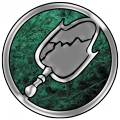 Malkavian
Malkavian
- -- Michael Keets - Chancellor of Quebec City.
- -- Rat de Bibliothèque -- Probationary courtier.
- -- Pharamond Lestrange -- Probationary courtier.
 Nosferatu
Nosferatu
- -- Petit Lard -- Count of Transportation
- -- Lilianne Le Parisian -- Lord under Count of Transportation
- -- Samuel Faucheux -- Lord under Count of Transportation
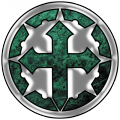 Ravnos
Ravnos
- -- Ezmeralda the Gadfly -- Courtier under Count of the Underworld
 Toreador
Toreador
- -- Elizabeth Rotari -- Confirmed courtier and local Bard.
- -- Eldred Morce -- Childe of the former Camarilla prince and royal hostage. {Held under house arrest by Elizabeth Rotari}
 Tremere
Tremere
Once upon a time, Quebec City belonged entirely to Clan Tremere. Its prince, Annabelle Lestrange was a favored childe of the Inner Councilor Mirlinda and a very gifted thaumaturgy in her own right. In 2022 the Sabbat successfully carried out the single largest dream assault ever conceived upon the Tremere of Quebec. Why they felt the need to wipe-out the largely quiescent Tremere of Quebec City instead of destroying New York or Chicago remains a mystery. When the supernatural dust finally settled, a Camarilla assault group "re-took" the city from the Sabbat and established a thriving Camarilla outpost. Among those allowed to re-settle were two Tremere, a master and an apprentice. But fate has not been kind to the Tremere, at least in regards to Quebec City.
- -- Eugenio Estevez -- Tremere Regent of Quebec City. {Stance: Politically Neutral}
- -- Masika St.John -- Apprentice of the 6th Circle. {Stance: Politically Neutral}
- -- Verbruch -- Guardian of the Tremere of Quebec City. {Stance: Politically Neutral}
 Ventrue
Ventrue
- -- Jeremy Sanderson -- One of the Camarilla's youngest and most successful Alastors.
- -- Dr.Émeric "Vespasien" Bouchard -- Senior Professor of Sociology and Master Mason: neonate Childe of Jeremy Sanderson.
- -- [[]] --
League Strike Force
- -- Xavier de Calais -- The so-called "Son of the Night"
- -- Jessiah Chandler -- Lasombra antitribu "Knight of Shadows"
- -- Chauncy Villier -- The League's famous / infamous "Wolf-Knight"
- -- Titania Deville -- Caitiff Spy-Mistress for Xavier, called the "Crimson-Knight"
- -- William Carlyle -- The "Badger-Knight"
- -- Jacob Morris -- The infamous "Serpent-Knight"
- -- Melanie Summers -- The so-called "Digital-Knight"
Independent Guests of Quebec
- -- Madame Mina -- Politically independent Ravnos.
- -- Élodie Deniel -- Politically independent owner of the Vampire club -- L'oiseau Noir.
Ceux qui ont succombé à la mort finale
- -- Annabelle Lestrange (Deceased - Summer of 2022) - Former Prince of Quebec City
- -- Placide Fabian (Deceased - Summer of 2022) - Former Seneschal of Quebec City
- -- Corentin - The Strong Former chantry guard (Slain in early October of 2022 by the Alastor Jeremy Sanderson)
- -- L'Epuisette -- Anarch Agent (deceased November 2022).
- -- Carter Vanderweyden -- Malkavian Solicitor (deceased - assassinated by an unknown Assamite in Ottawa, November 2022)
- -- <<Buzz-saw Jim>> -- Mid 20th century southern mass-murderer. (deceased October 2022)
- -- <<Gnaw Slag>> -- The infamous British cannibal rapist of 1969. (deceased October 2022)
- -- <<Angry Sheik>> -- Malkavian Wrestler (deceased October 2022)
Websites
http://old.wikimapia.org/#lat=46.847982&lon=-71.247711&z=10&l=0&m=b
http://www.ville.quebec.qc.ca/EN/index.aspx
http://www.calechesquebec.com/en/our-services/horse-drawn-carriage-tours.php
http://www.powercorporation.com/
http://www.relocatecanada.com/quebeccity/publish.html
http://en.wikipedia.org/wiki/List_of_Quebec_media
http://en.wikipedia.org/wiki/List_of_historic_places_in_Quebec
http://www.pbase.com/jeanchiasson/image/69213341
http://en.wikipedia.org/wiki/Culture_of_Quebec
https://en.wikipedia.org/wiki/List_of_events_in_Quebec_City {The Social Season}
